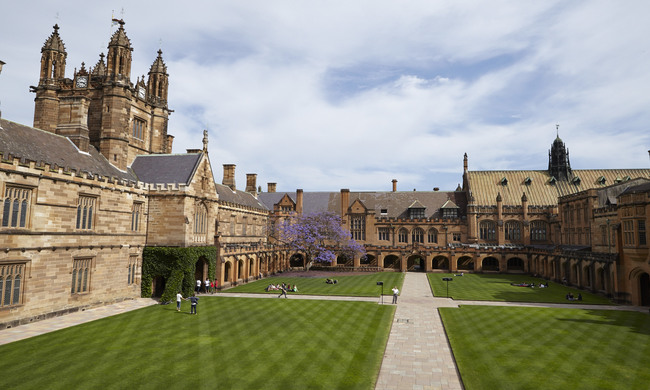For an audio read by the author, please click here.
This essay first appeared in the Nov. 3, 2023 Epoch Times.
The past three installments have explained why so many of America’s colleges and universities are dysfunctional. This final installment focuses on some possible reforms. (There are others.)
Reform #1: Get the Feds out of Higher Education
Readers may be familiar with the French expression, Cherchez la femme—”look for the woman.” The saying encapsulates the view that a man’s behavior often can be explained by feminine influence.
When I was in academia, I coined the phrase, Cherchez le programme fédéral. This encapsulated the observation that particularly stupid activities often were driven by federal grants or regulations.
As readers of our Constitution know, outside of the District of Columbia and defense-related research, there really is no constitutional justification for federal involvement in higher education. More to the present point: Getting the feds out is probably the single most important step toward curing our universities.
As a general matter, connecting higher education and politics is dangerous, for some of the same reasons establishing a state church is dangerous. More specifically, federal programs have—
- steered academic resources away from worthy projects and toward favored political boondoggles;
- imposed a stifling blanket of regulations;
- with the stick of regulations and the carrot of “free money,” created a ponderous academic bureaucracy;
- driven up the cost of tuition;
- through grants and loans, enticed millions of students to attend college who would be better off employed or in trade school;
- created insupportable public and private debt; and
- generated mobs of impressionable and dependent student-voters—people who would make better political decisions if they were outside the toxic campus environment.
Of course, there are students genuinely qualified for college who face financial hurdles. The solutions are (1) traditional state financial support, (2) private scholarship programs, and (3) working one’s way through college.
Reform #2: Send Your Donations Elsewhere
Commentator Dennis Prager has opined that any conservative who donates to a university is nuts.
In general, he’s correct. Stop selling them the rope to hang you. And if you think you can control what the university does with your funds, think again. They have a financial staff adept at evading donor restrictions.
By way of illustration, conservative donors financed a “Center for the Study of Western Civilization” at the University of Colorado. The idea was to assure a conservative presence on the leftwing Boulder campus. But when campus authorities discovered that a visiting professor at the Center was advising President Trump during the 2020 presidential election dispute, they cancelled his courses and stripped him of his public duties.
If you want to promote learning, consider this, arguably self-serving, suggestion: Donate to a state-based pro-freedom policy center (“think tank”). They don’t accept government funds, and have learned to employ modest amounts of money to create immodest results. Almost certainly, they’ll make better and more efficient use of your funds than any college or university.
Reform #3: Break the Hierarchy
In many academic fields, the relatively small number of faculty at a handful of institutions have an outsized influence on the national agenda. In the first half of the 20th century, many medical schools adopted the notorious “Jewish quota” because Harvard University had done so. Similarly, the Harvard connections of Critical Race Theory (CRT) help explain its wide acceptance despite its lack of factual basis. (CRT is better described as a hypothesis than as a theory.)
In the first installment, I mentioned that when I chose a law school, I “turn[ed] down offers from more prestigious institutions,” and I promised to explain the results later. Here they are:
Academic hierarchy largely determines who gets hired for the best jobs. For example, almost everyone nominated to the Supreme Court over the last few decades has had connections to Harvard or Yale. Hierarchy largely determines, directly or indirectly, which professors receive lavish research support, are invited to speak at influential events, get media exposure, and obtain good publication offers.
My youthful decision to attend a law school less prestigious than any of several to which I was admitted has impaired my professional career for over 50 years. I have no interest in a judicial appointment, but it remains frustrating that, after decades of achievement, I find it harder to obtain good publication offers than less-knowledgeable professors who can flaunt “better” law degrees.
Even more important is that power corrupts. Granting so much influence to a relative handful of academics encourages bad results.
Citizens and policy makers should begin to break the hierarchy with a benevolent form of affirmative action: seek out and support excellent scholars who did not attend one of the most prestigious universities.
Former President Donald Trump did this when he appointed Amy Coney Barrett—who had attended neither Harvard nor Yale but was first in her law class at Notre Dame—to the Supreme Court.
Reform #4: Decentralize State University Systems
By now, we should have learned that controlling massive-multi-campus state university systems from a central bureaucracy makes no sense. “Consolidation” often is billed as a way to increase efficiency. But competition is a far better way.
States should allow each campus to steer its own course. State funding should be in the form only of student scholarships, allowing students to choose among campuses and freeing campuses to compete for them. Increased competition would force administrators to shed a lot of useless baggage. It also would create more options for conservative and traditional students than they now have.
Reform #5: Where Appropriate, Privatize
The case for state support of higher education is strongest in academic areas that transmit the sort of knowledge and culture that benefits the wider society but is not readily marketable: pure science, history, literature, classical studies, and the liberal arts in general.
Although state lawmakers tend to favor vocational (including professional) education, it should not be a state responsibility. It is readily available from the private sector. State-run vocational and professional schools merely crowd out private-sector alternatives.
Moreover, lawyers, doctors, engineers, and most other professionals enjoy incomes well above that of the average taxpayer. Students seeking to enter such careers should pay their own freight or obtain the scholarships necessary to do so. They should not bill the taxpayers.
Therefore, state law schools, medical schools, and similar professional institutions should be privatized. In the unlikely event policy makers decide their state really needs, say, more lawyers (!), then the state can offer scholarships to law students for use in private institutions. The state doesn’t need to operate its own law school.
Reform #6: Enforce the Law
The reader may notice I tend to favor decentralized solutions over centralized ones. In my experience, academics usually find a way to evade top-down rules they find too inconvenient. Indeed, some academics seem to think laws and standards are for other people, not for themselves. That is one reason they have long defied the rules against racial and ethnic discrimination.
The academic assumption of immunity from the laws applied to the rest of us also explains why so much campus disorder, such as building takeovers and out-of-control demonstrations, have afflicted the nation’s campuses.
Therefore, I offer one suggestion for centralized action: State authorities should enforce the law on campuses, just as they enforce it elsewhere—with or without the consent of the academic bureaucrats. This particularly applies to the “sanctuary” campuses that harbor illegal migrants.
Similarly, authorities should assure that state universities do not violate students’ First Amendment rights and other constitutional rights. (Kudos to Florida governor Ron DeSantis, R., for his work in this area.) And taxpayers should not be forced to support political programs disconnected from the academic mission to transmit knowledge and culture.
Yet another point on enforcing the law: Under most state constitutions, university boards of regents are executive branch officials who are supposed to be responsible to the citizenry. They are not chosen, as some assume, to defend the state university system, but to ensure that the system serves the public.
In states where regents see themselves as working for the academic bureaucracy rather than the citizenry at large, lawmakers may need to enact measures to correct the situation.
A Final Reflection
In the Greco-Roman world, students’ families hired teachers directly to instruct their young people, or groups of families hired one or more teachers to form a school. If those hired did not perform well, they were replaced. Students remained part of the larger society during their education.
This approach seems to have worked; it certainly produced men—and some women—of great learning.
This kind of individualized instruction is even more feasible today when, due to the internet, knowledge is decentralized and available to all. For most academic fields, there is no longer any need to bring hundreds or thousands of students together in one place.
My point is not that we should abandon campuses entirely. My point is that the current university model is not our only alternative. History offers us other models we can adapt to our own needs.









